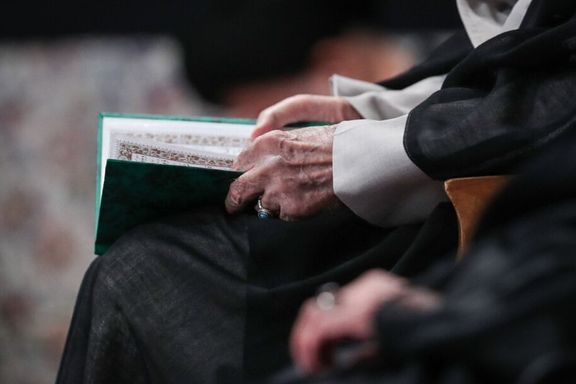Survival mode: how Tehran adapts through crisis, endures decay

Tehran is in a tougher position after the 12-day war and the return of UN sanctions but may not be as close to collapse as some Iranians might like.

Tehran is in a tougher position after the 12-day war and the return of UN sanctions but may not be as close to collapse as some Iranians might like.
Over the years, the Islamic Republic has learned through crises how to avoid breakdown by adjusting pressure and tension.
This does not mean the system is stable. But the way political actors interpret a state steadily losing ground can, paradoxically, prolong its life and dull the will to resist.
When everything is framed as “imminent collapse,” the mechanisms through which the power structure renews itself go unseen.
The Islamic Republic, precisely when it appears weak, is rebuilding itself. The rulers in Tehran are shifting from rigidity to hybridity—from total control to a contradictory mix of freedom and repression.
A new logic of survival
One sign of this shift is visible in the hijab issue. In much of Tehran and other major cities, the state has largely pulled back from strict dress enforcement, though verbal warnings have returned.
The sight of unveiled women and the freer—if still risky—operation of cafés are widely seen as retreats from the theocracy’s ideological ground.
But that retreat tells only half the story. While scaling back the morality police, the government has intensified executions and political arrests. The security apparatus advances elsewhere with renewed vigor.
In this survival logic, Tehran knows total control is neither possible nor necessary. It loosens its grip in some areas to vent pressure while consolidating power in others. This could be called controlled liberalization: limited freedoms to absorb discontent, paired with harsh repression to enforce discipline.
Even these freedoms are narrow and uneven—visible mostly in affluent parts of Tehran. In other cities, tolerance around hijab or social life is largely confined to wealthier districts. Only a small segment benefits, while the threat of arrest still hangs over all.
This display of flexibility is part of the survival mechanism—meant to defuse unrest and repair eroded legitimacy.
Redefining freedom
The Islamic Republic is trying to redefine freedom itself. Freedom becomes not a universal right but a class-based privilege without legal protection, shadowed by laws ready to repress. What is limited and controlled is sold as freedom.
This divide is not only social but psychological. Images of these narrow freedoms circulate online, creating a sense of normalcy—as if society were breathing again and the control had softened.
Yet this circulation is itself a tool of control. Power now operates not only through coercion but through the display of freedom—showing it to blunt the desire for it.
Repression, however, has not changed.
In the post-war period, mechanisms of elimination have not disappeared—they have become more complex and severe. Arrests and executions have multiplied even as scenes of openness are displayed.
These images of easing mask the reconstruction of the same machinery of fear. What has occurred bears little relation to freedom.
(Not) understanding power
The Islamic Republic has changed its governing logic, while many analysts—ignoring the full scope of that shift—still read every retreat as weakness or collapse.
Yet within those very weaknesses, the Islamic Republic has forged new methods of survival, oscillating between coercion and tolerance.
Today’s government no longer rules through rigid discipline but through fluid, contradictory behavior in which retreat and advance reinforce each other. This marks a kind of institutional learning: endurance now depends less on absolute control than on calibrating the limits of freedom and repression.
To treat weakness or non-enforcement of law as proof of collapse is to miss Tehran’s new logic. The Islamic Republic has built alternative strategies to mask fragility—ways to rebuild legitimacy and manage society amid crisis.
In today’s Iran, the system finds its strength not in closing doors but in keeping them half-open. Apparent openings and simultaneous crackdowns are two sides of the same political logic.
Understanding that logic is essential—because “weakness” is not always a prelude to “collapse.” Sometimes, it is the state’s latest strategy for survival.